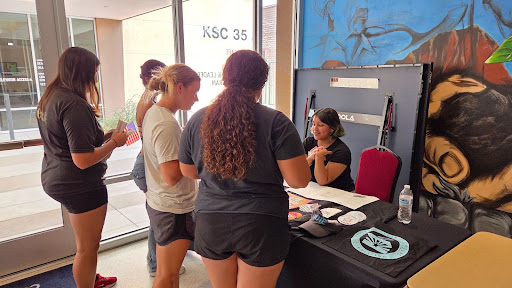Endometriosis, suffering in silence
Nikki Waldmann
Mesa Legend
One of the biggest concerns for women today is their health. With so many new problems arising, it’s easy to understand why they feel worried. It’s a standard practice for many women to see their gynecologist at least once a year. These annual visits include a pap smear and mammogram to make sure everything is in proper working order and that cervical or breast cancer haven’t developed.

Many women wouldn’t know how to react if the prognosis came back as “endometriosis”. Some may not even know what it is. While it is common that young women know from a young age about breast cancer, STDs, and even cervical cancer, they rarely learn about the possibility of developing endometriosis. Gynecologists and doctors should educate young women about the seriousness of this silent disease. Endometriosis is when the inside lining of the uterus grows on the outside instead. This can cause chronic pelvic and lower back pain, as well as painful periods with excessive bleeding, or pain with intercourse.
Doctors believe there is a hereditary link, especially if other women in the family have had the disease. However, doctors have found no real answers as to why this happens. Pamela Kays, a physical therapist who treats women with pelvic floor dysfunction shares “There is no known cure for endometriosis, but there are treatment options available to manage the condition. Pain can be managed with medications, such as NSAID’s or other pain medications. Since the condition is estrogen-dependent, contraceptive medications that interrupt the estrogen cycle/ production can reduce the formation of endometrial tissue.”
She went on to say that many women also undergo laparoscopic surgery to have endometrial tissue removed.
In addition to the pharmaceutical and surgical treatment options, pelvic physical therapy treatment can assist with management of secondary issues resulting from the chronic pain of endometriosis. Sadly, complications such as infertility often come with endometriosis. Pamela Kays states that most couples have a successful fertility rate of 15–20 percent. In contrast, women with endometriosis have a 2-10 percent fertility rate.
Another complication these women face is a higher risk for developing ovarian cancer later in life.
When asked if she knew what endometriosis was, 22 year old MCC student Jessica Mann replied, “No but it sounds terrible, and I would be miserable.” Many consider endometriosis the silent disease because there are no visible symptoms. Women look normal on the outside, but on the inside they are dealing with pains and constant fatigue.
Many places screen for endometriosis including primary care physicians, OBGYN offices and even Planned Parenthood. Online resources can help answer many questions without having to wait for a doctor’s appointment.
It is important for women to get checked by their doctors.









